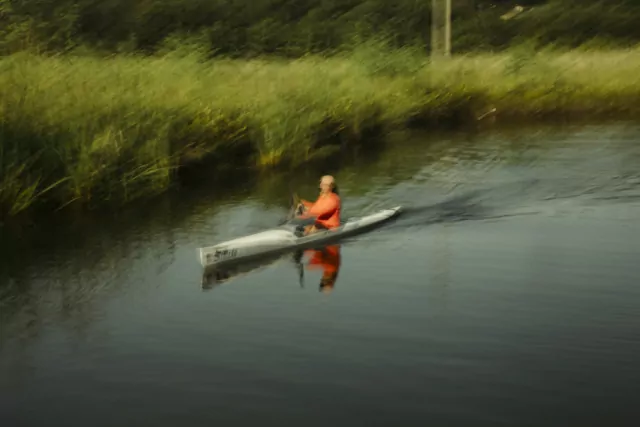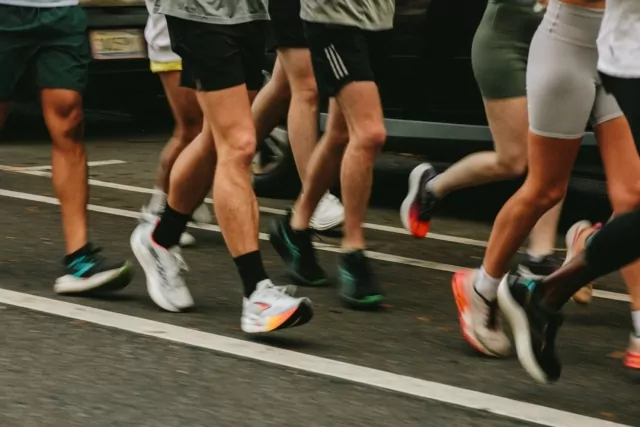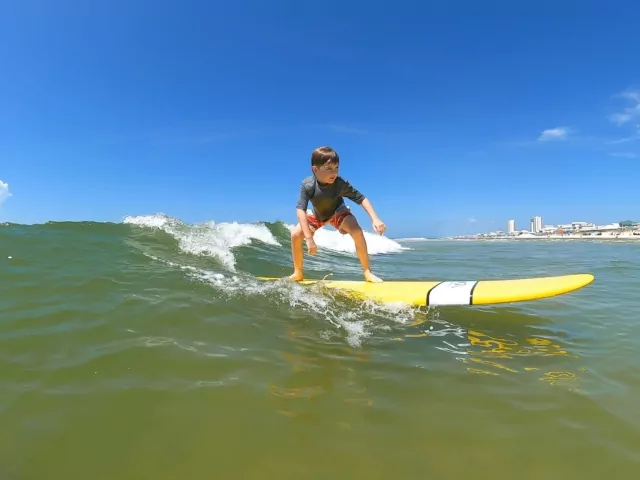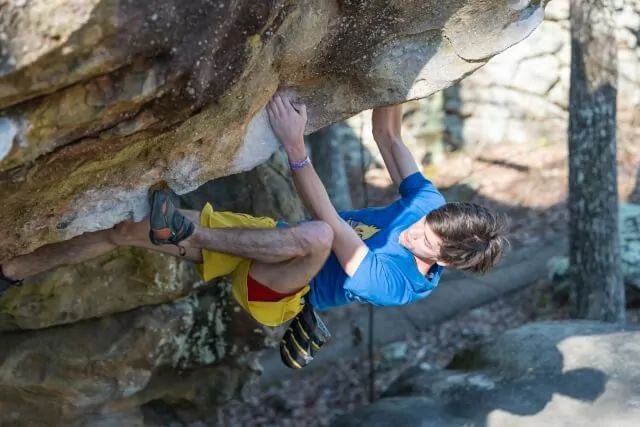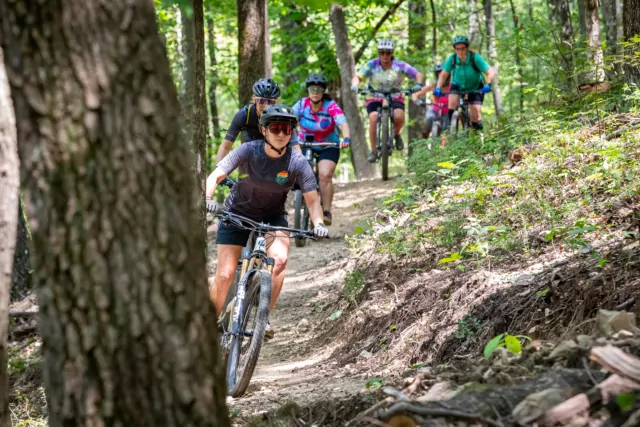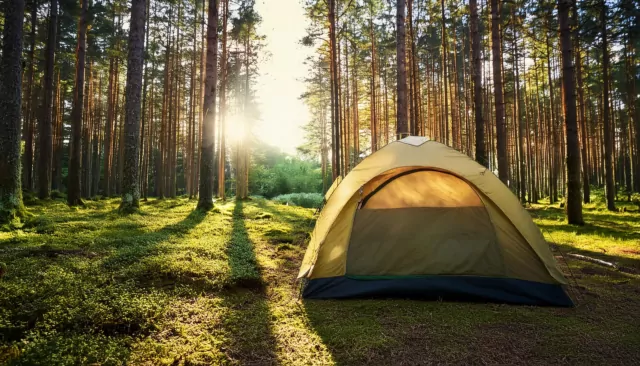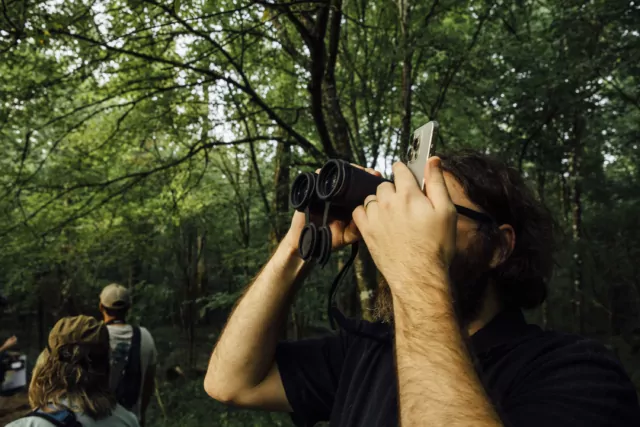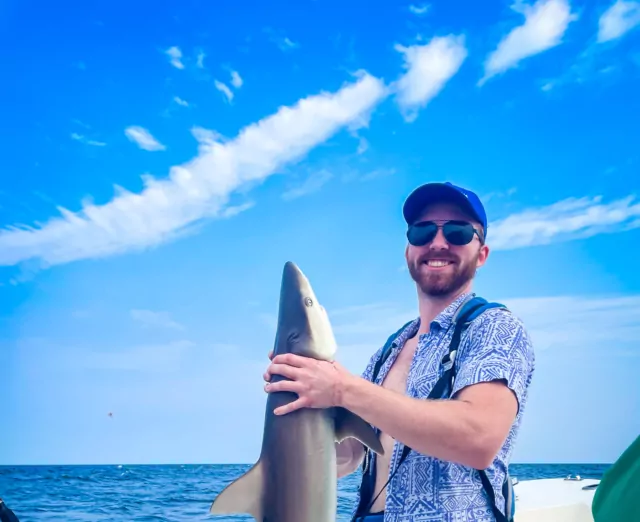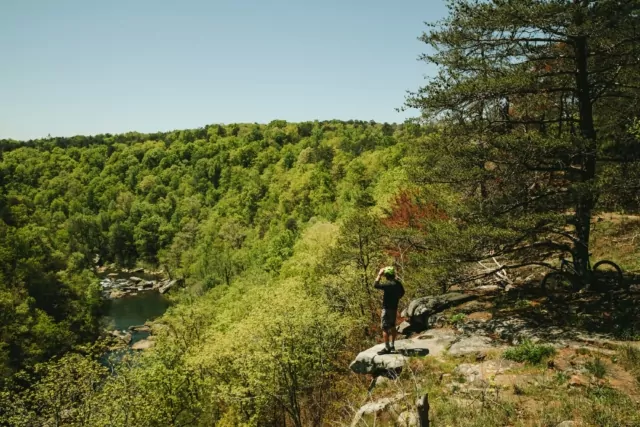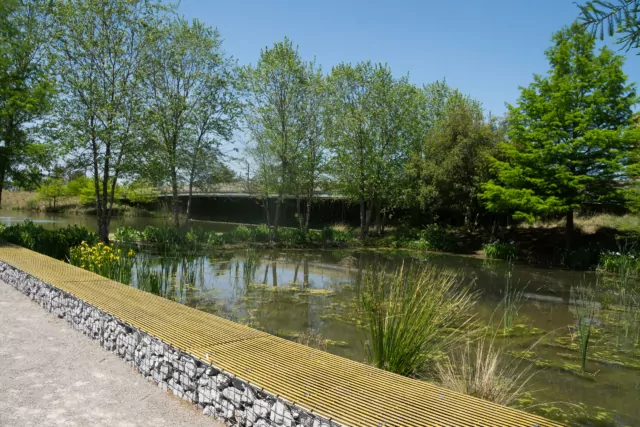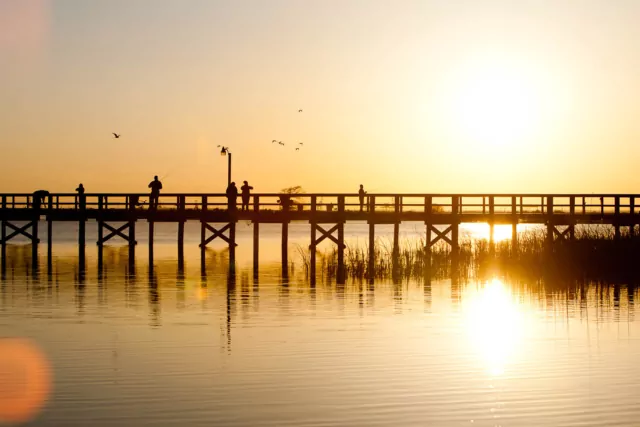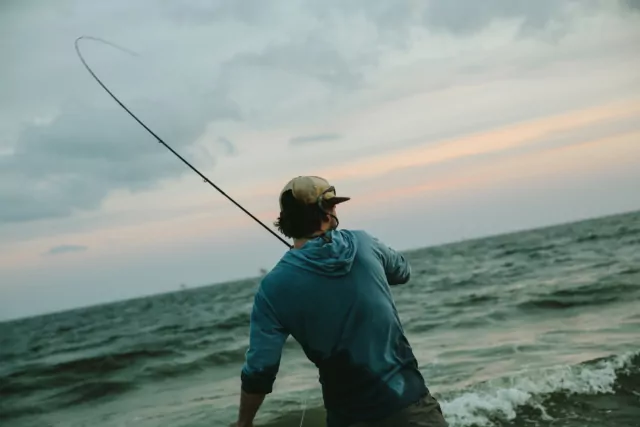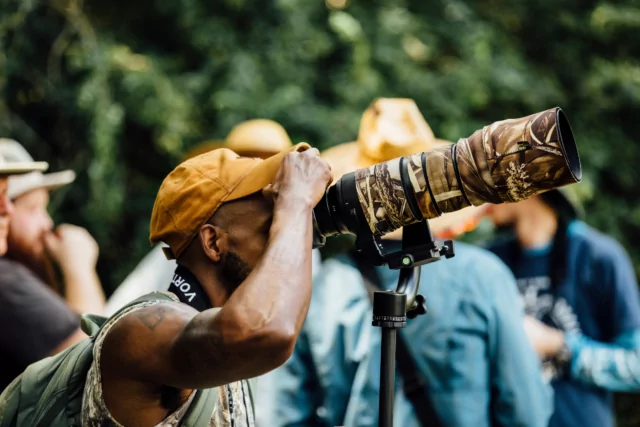Tell anyone about the Alabama Gulf Coast’s sand, sun and water, and the most likely response will be, “I didn’t know Alabama had beaches.”
More often than not, the first tide associated with the state is the Crimson Tide. The existence of Bama’s sandy shores and miles of pristine beaches, from Gulf Shores to Dauphin Island, flips the perception of Alabama on its head, catching both locals and out-of-towners alike by surprise. The next surprise? Alabama has the surf culture to match.
An ally and a driving force of that surf scene lies nestled amongst shops and attractions in a shopping center just 10 minutes from the beaches of Gulf Shores. Tambo’s Surf Shack is unassuming to the passerby. Its sticker-covered front doors are easy to overlook — that is, until you realize what it is you’re looking at. Tambo’s Surf Shack is the mecca of coastal Alabama’s surf culture and Alabama’s only surf and skate shop.
“I was born and raised in Gulf Shores, and I learned how to surf here,” says owner Mike “Tambo” Tamburello. “My after-school care was hanging out at the beach.” Tambo went surfing every day with his friends, and there was no shortage of surfers back then. His love of the sport in Alabama eventually led him to California, with competition surfing taking him all over the world. Over the course of 12 years, he competed in the ESA, NSSA and American Pro Surf Series events. In the process, he proved that the Gulf Coast is a legit place to cut your teeth and learn the sport.
Between competitions in the Caribbean or on the East Coast, Tambo would pack up his surfboards for visits home. It was on these trips back to the Gulf Coast that he discovered the surf scene that practically raised him was fading. “Between 2008 and 2016, there was hardly anyone surfing,” he says. “Some of my friends were still out there, but there was a huge gap in the age bracket. There were so many kids missing out, and it definitely wasn’t as big as when I was growing up.”
Surfin’ B.A.M.A.
In 2016, after years of professional surfing across the world’s waves, Tambo moved back to Gulf Shores to resurrect the surf culture in his hometown. He started with the surf shack, marketing to local kids and letting them tell their peers about the shop and generate buzz. “When I opened up, I found the few kids I saw surfing,” he says. “I would say, ‘Hey, you want to rep our shop? Here, we’ll hook you up with some cheap surfboards, wax, stickers, whatever.’ The word spread, and then their friends started surfing.” It’s in the beginning stages of surfing that they discover just how unique Bama surfing can be.
The only thing more surprising than the idea of surfing in Alabama is the reality. Alabama has about 30 miles of surfable coast, with a solid 200 to 230 surfable days a year. In layman’s terms, it’s considered a wave-challenged area. But there are two truths about Alabama surfers: they’re not afraid of a challenge, and when the waves are out, so are they. Take their favorite times to catch a good surfing session. “Hurricanes are a really favorable surfing time,” says Tambo. “We don’t want the destruction from a hurricane, but we do want the swells. It’s great when that happens because you don’t have to wear a wetsuit, the water’s warm and the waves are perfect.”
Wintertime, another ideal stretch for picturesque Bama waves, is a different story, at least where the water temperature is concerned. The season lasts from late November to early March, when the fetch swell (consistent winds that blow over the water for a prolonged period of time, creating rhythmic waves) is greater and the water averages a temperature in the mid-60s (for contrast, the water in the summertime averages in the mid-80s range).
Undeterred, surfers don full-length 3-millimeter wetsuits, gloves and booties to brave the waves. According to Tambo, the cold water is the only downside of winter surfing. “I mean, it gets cold, dude. When it snowed last year, we were out there. But everything else is fine,” he says. “You get the best waves in the wintertime. You see a lot more people surfing in the summer months, but your dedicated surfers are definitely there in the winter.”
Welcome Aboard
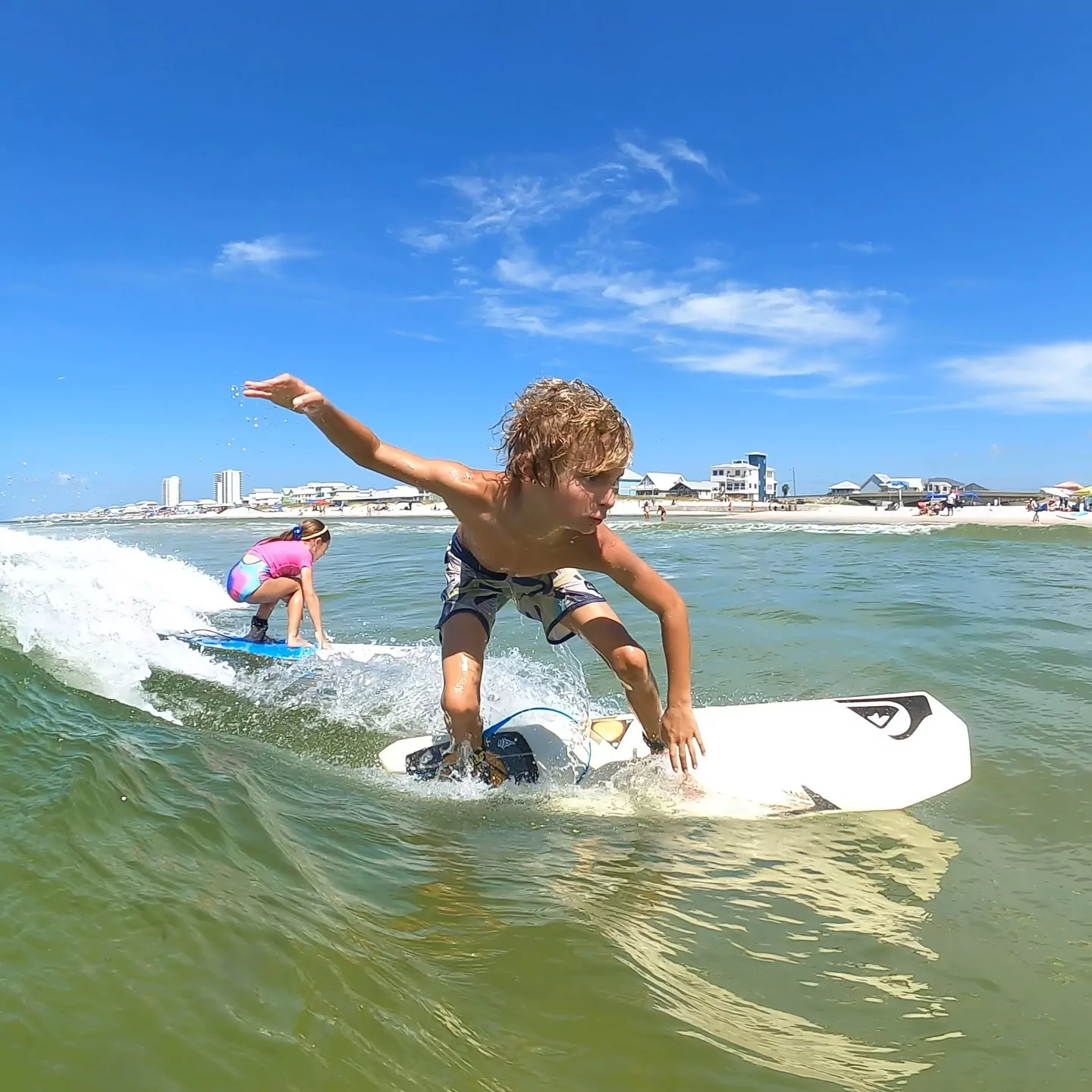
Dedication is part of the reason surfing has seen a resurgence in the past decade, both from Tambo, who led the charge, and the community — kids, teens and adults — who responded with enthusiasm. He knew that strengthening a fading group would take more than a surf shop. It would take classes, education and workshops.
The shop holds three camps a year called Camp Shred. It’s here that kids learn to surf and skate, two skills that mirror each other in different ways. “They go hand in hand,” says Tambo. “Surfing and skating benefit each other.” Open to anyone, the average age range is from 5 years old to 16 years old. Attendees learn how to balance, practicing their skills in the indoor skate ramp at the shop and, of course, out in the water. He teaches them the timing, proper form on the board, how to pop up and how to stand properly. “After that, we let them do their thing, because every surfer is different,” he says. “They all develop their own style, and you can’t teach style. You can just teach how to do it.”
Tambo brings the sport into the classroom with his program at Gulf Shores Middle School. “It’s the only school in Alabama that has that program,” he says. “We teach kids how to shape surfboards, and then at the end of the year, they get to surf on them.” Through the process of covering, shaping, glassing, sanding, tinting and designing their boards, the kids are already investing in the sport before they even hit the water. Around 90% of those kids have never shaped a board or surfed. “They fall in love with it,” says Tambo.
Paying It Forward
Three locations on the Alabama coast prove to be favored surf points: Alabama Point, Cotton Bayou (known by surfers as The Cove) and Lagoon Pass Park (also called West Pass). Alabama Point gives the best wintertime waves and the other two spots make for year-round surfing havens. Surfing not only gets kids outside and active; it teaches them responsibility for themselves, each other and their surroundings. “We’re really keen on keeping our beaches and water clean. Surfing and keeping a good environment both go together,” says Tambo. “The kids pick up trash when they leave the beach, even if it’s not theirs. It’s important.”
Above all, Tambo’s Surf Shack is a place local kids and teens can call home. They come to do their homework after school, skate in the shop and frequent the classes for weeks.
Roy Watson is one of those kids. Roy was introduced to the surf and skate shop by a friend, a result of Tambo’s word-of-mouth advertising. “I’ve always loved skateboarding. That was the one thing that separated me from everybody else,” he says. “This kid was like, ‘You gotta go check out Tambo’s,’ so I started hanging out here.” After skating at the shop for about six months, Roy eventually grabbed a soft-top surfboard and gave it a try. From then on, he was hooked.
That was eight years ago. Roy now works at the shop, manning the register and teaching kids during the surf and skate camps. But his favorite part of his Tambo’s experience has been learning how to surf. “It’s been the best,” he says. “I was a loner before I came in here, and then he’s taught me to surf and taught me social skills. I’ve learned a lot business-wise as well.”
It’s a repeat of a pattern that manifested in Tambo’s life when he was younger. His mom, a property manager, was always working, and his parents couldn’t afford daycare. Enter David Crosby, who describes himself as a fellow “beach rat” and who Tambo says is “a local legend.” “He would always take me to random spots all over when the waves were good,” he says. “He was the person who always took me from when I was a grom — that’s what we call the little kids.”
Crosby, an avid surfer himself, invested in Tambo’s career, traveling to see him compete in California, driving him to competitions and encouraging him throughout the process. “Tambo started competition surfing and really went after it,” says Crosby. “It can get dangerous and aggressive, it’s a very adrenaline-filled sport, and there are some serious consequences if you mess up. But he was hardcore and did it.” That mentorship is a debt that Tambo wants to pay forward. “It’s all about the kids growing up and understanding how to share that stoke of surfing,” he says. “One day, they’re going to be parents, and I want them all to look at me like I look at Crosby. And I want them to be grateful for what we’ve built for them.”
Surfs Up
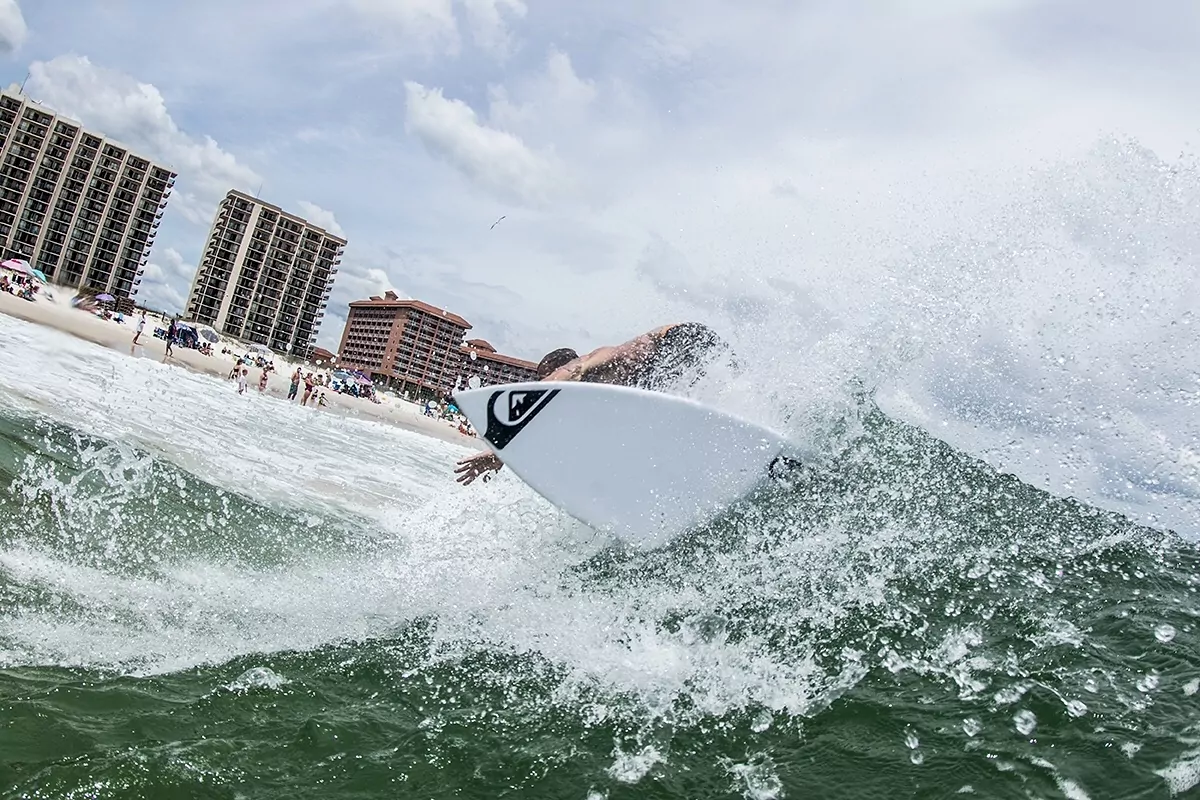
What Tambo has built is a once-again thriving surf culture in Alabama, regrown from a love of the sport and the local waves that taught him. “This is the biggest surf scene that Alabama has ever had, guaranteed,” he says. “The age bracket for surfing around here from five all the way up to 75.” Nearly a decade after coming back home, his classes are full and surfboard sales are higher than ever.
And it’s still growing. The sport is being passed on to an enthusiastic younger generation who has embraced it just like Tambo did when he was young. “Walking away from a professional career where I was going to places that are like vacations to normal people, and leaving all my friends I made over all those years to come back home and put money, time and effort into something that I didn’t know will work out was a huge risk and such a sketchy move,” he says. “but it’s all worked out.”
Never one to sit still, Tambo’s looking to the future, and there’s more in the works to make surfing in Alabama even more accessible. When he moved back home to open his surf shop, he also started developing plans for a wave pool in Baldwin County. “Things will start coming to fruition in the next couple of years,” he says. “Eventually, through this project, we’re gonna be able to have perfect, 24-hour-a-day waves in Alabama.”
Until then, teaching locals to value and appreciate their natural local environment helps raise a whole new crowd of surfers who are excited to get outside and into the water. “It’s just good to see him getting a new generation outside, learning to surf, to skate, how not to drown,” says Crosby. “Knowing how to swim, surf and be outside, it’s making them safe. It’s such a really positive thing, and I’m really, really proud of what he’s done.”
For Tambo, it’s gratifying to instill a love of surfing in the locals, who then tell their friends and family about the unique attributes of the Gulf Coast. “I almost had to rebrand my hometown to the people that lived here, and it was so wild, dude,” he says. “They didn’t associate this area with surfing. I’d introduce them to it and the next thing, you know, they’re surfing five, six days a week. Now they’re all addicted.”


